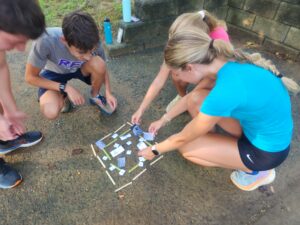Cheetahs and Gazelles

By Michael Haughwout
While studying Cheetah conservation practices in Namibia, I was able to reflect on predator-prey relationships and how interesting, intricate, and important they are. These relationships can tell us much about the health of an ecosystem and even about the ways ecosystems can be restored. Many of us rarely stop to think about how different types of predators exist — including mesopredators, which consume organisms, can be consumed themselves, and are debatably the most influential types of predators in an ecosystem. We also need to consider how we as humans influence both predator and prey populations.
Instruction on predator-prey relationships often only covers the general environmental roles of predators and prey. Many instructors typically focus on the principles that all predators are organisms that consume and regulate prey and that all prey only consume producers (plants). Numerous educators also generalize all predators as apex predators and overlook mesopredators entirely. We must acknowledge that some predators can also be consumed, and we need to recognize that apex and mesopredators are both needed in a healthy ecosystem.
This content is restricted to subscribers only.
If you are not yet a subscriber, please consider taking out a subscription here.
If you are an existing subscriber, kindly log in or contact us at info@greenteacher.com for more information.










